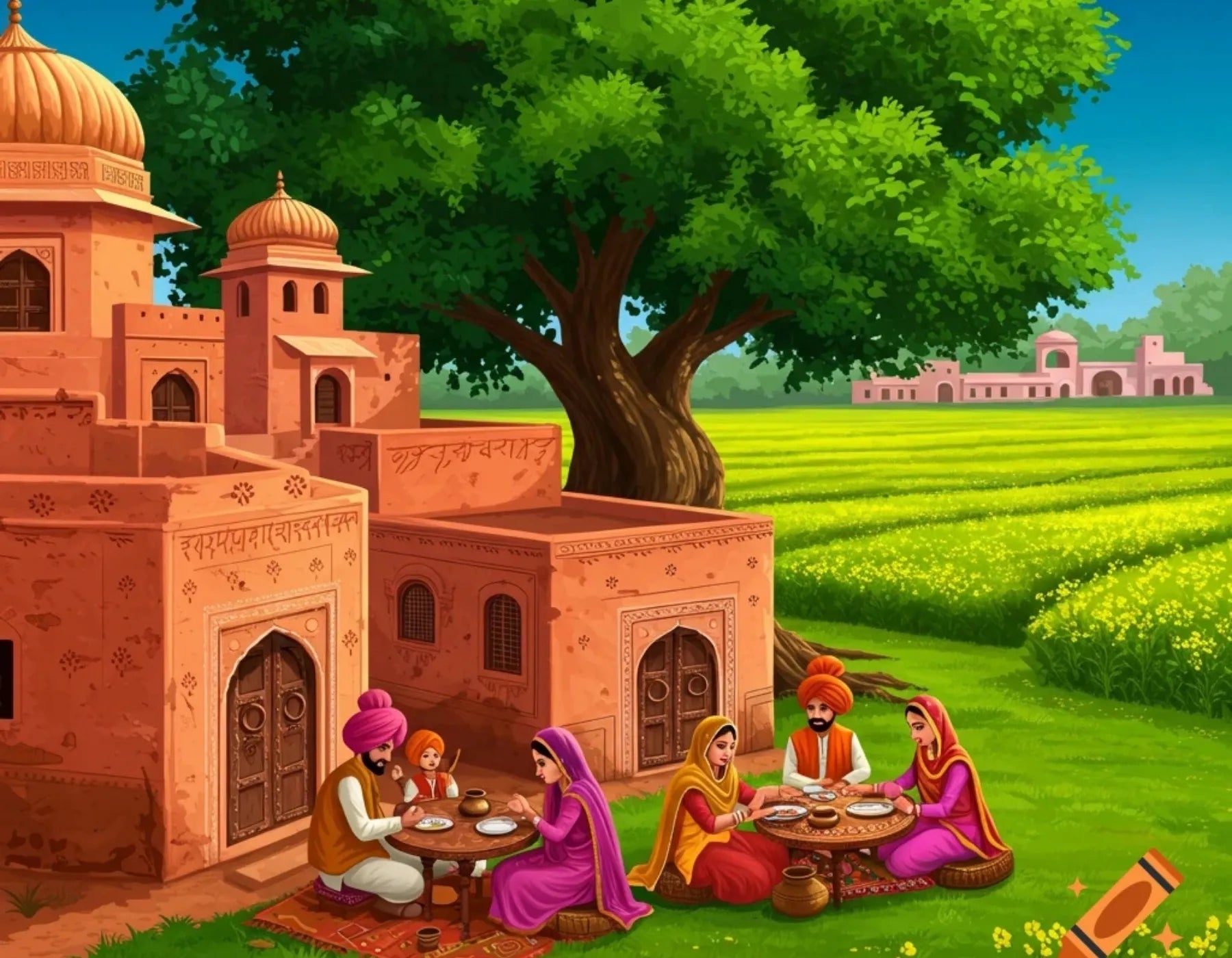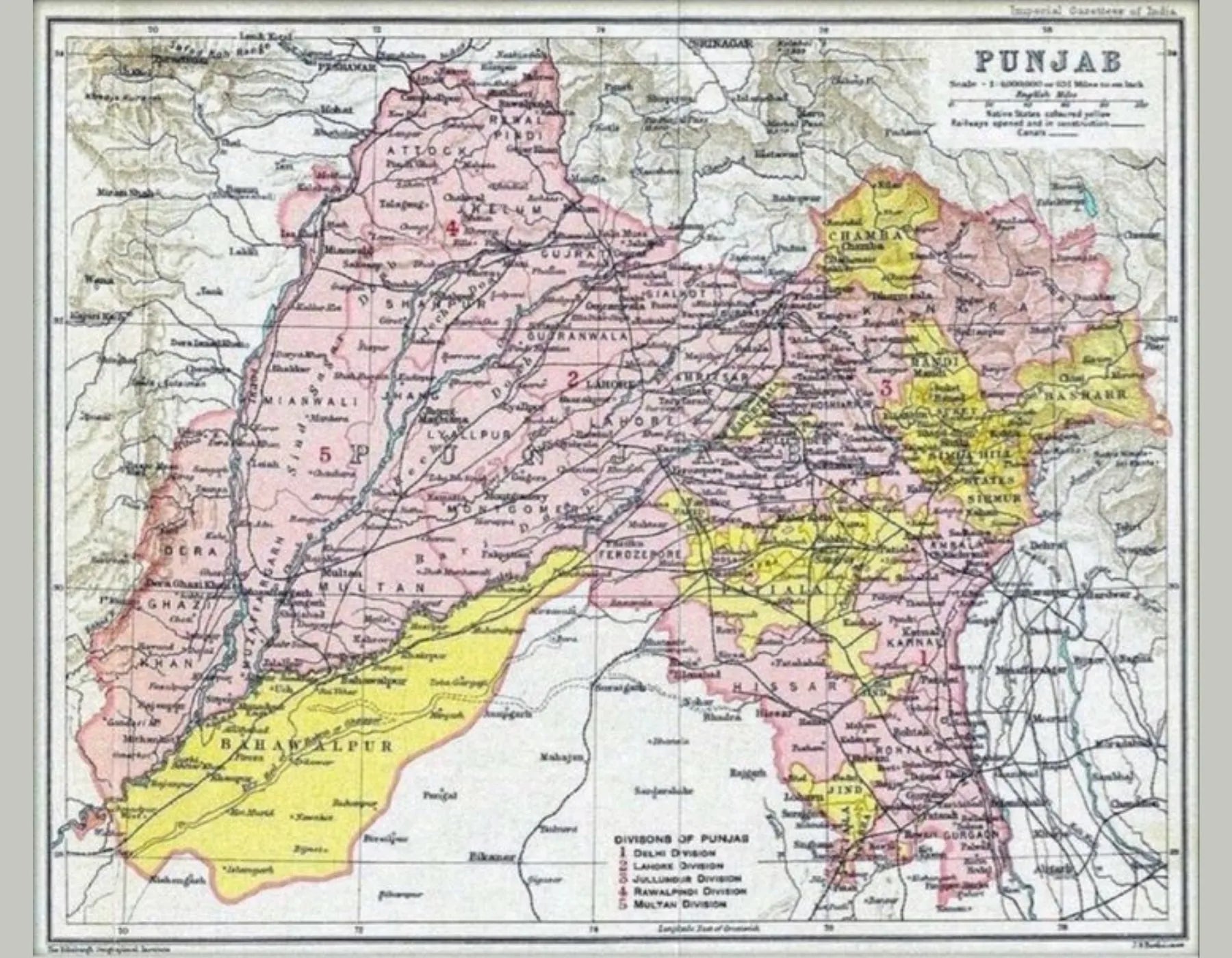
What It Meant To Grow Up in a Punjabi Household
Growing up in a Punjabi household is not just an experience—it is a vibrant, multi-sensory immersion into a world of culture, community, tradition, and values that shape our identities forever. From the clanging of steel utensils in the early morning kitchen to the thunderous laughter in the living room during family gatherings, every corner of a Punjabi home radiates life and legacy.
The Foundation: Respect, Roots, and Resilience
In a traditional Punjabi household, respect for elders is the golden rule. From a young age, we are taught to bow our heads when greeting elders, to touch their feet, and to respond with “ji” as a sign of reverence. These customs are more than etiquette—they're symbolic threads that connect generations.
We grow up deeply rooted in our ancestry. Family stories of partition, migration, farming in Punjab’s heartlands, and village legends are passed down over cups of chai, often in homes where the walls are adorned with sepia-toned photographs of great-grandparents and faded wedding garlands.
Resilience is modeled daily—through our parents who wake up before dawn, our grandparents who never waste a grain of food, and our siblings who juggle both Western expectations and Eastern traditions without complaint.
The Language of Love: Food and Hospitality
To grow up Punjabi is to grow up well-fed and lovingly spoiled. Food isn’t just nourishment—it’s an expression of love, identity, and celebration. Every morning begins with the sizzle of tadka, the bubbling of chai, and the soft rolling of rotis on a wooden chakla.
Homemade butter (makhan), lassi, saag, rajma chawal, and chole bhature are staples that hold sacred space in our memories. Meals are communal, boisterous, and never solitary. Plates overflow not just with food, but also with warmth and laughter.
Hospitality is non-negotiable. No guest ever leaves empty-handed. Whether it’s a relative, friend, or stranger, we treat every visitor like royalty, often insisting, “kha ke jao, kuchh meetha ho jaaye!”—meaning, “you must eat something sweet before you leave!”
Sacred Spaces: The Role of Religion and Spirituality
The Gurdwara is more than a place of worship—it’s a cornerstone of community life. Weekly visits to the Gurdwara Sahib are routine. The sounds of kirtan, the warmth of langar, and the scent of incense fill our childhood memories.
At home, Sikh symbols and scriptures surround us. A framed picture of Guru Nanak Dev Ji is usually present in every room. The Japji Sahib is often recited at dawn or before important decisions. Even if we don’t understand every word as children, the vibrations of these practices embed in our souls.
Faith isn't just ritual—it's interwoven with our moral compass. We're raised to uphold the values of seva (selfless service), kirat karo (honest living), and vand chakko (sharing with others).

Family Dynamics: The Beauty of Joint Living
Most Punjabi kids grow up in multi-generational homes. Living with grandparents, cousins, uncles, and aunts teaches us the value of community, cooperation, and compromise.
This household structure ensures that every child is raised not by two parents, but by an entire village. Grandparents act as historians and spiritual guides, while cousins are your first best friends.
Even discipline feels communal. If you’re caught doing something mischievous, you’re just as likely to get scolded by your aunt or grandma as by your mom. But you’ll also be embraced, defended, and spoiled by the same hands.
Traditions, Weddings, and Loud Celebrations
Punjabi life is synonymous with celebration. Every occasion is loud, colorful, and unforgettable. From Lohri to Vaisakhi to Diwali, festivals are celebrated with traditional attire, bhangra, and sweets that melt in your mouth.
Punjabi weddings are in a league of their own. Lavish, multi-day affairs that include mehndi, sangeet, jaggo, and the grand reception. The music is loud, the dancing relentless, and the emotions raw. Growing up, we learn the intricate steps of gidda and bhangra before we can tie our shoelaces.
Even funerals in Punjabi culture, while solemn, are communal and cathartic, filled with prayer and reflection, followed by langar, symbolizing continuity and support.

Cultural Signatures: Fashion, Language, and Humor
Our closets are treasure troves of Patiala suits, phulkaris, and juttis. Even if we wear jeans to school, we’re expected to dress traditionally on holidays or religious occasions. Under the bed, there’s always a suitcase full of “special clothes” meant for functions that may or may not ever happen.
The Punjabi language is melodic, rich in idioms, and often brutally honest. We grow up bilingual, seamlessly switching between English at school and Punjabi at home.
And let’s not forget Punjabi humor—sharp, witty, and delightfully sarcastic. Whether it’s a taunt from dadi about how skinny you’ve become, or a joke your chacha cracks during dinner, laughter is always part of the background noise.
Hard Work and High Expectations
From a young age, academic excellence, discipline, and ambition are instilled. “Doctor banja, engineer banja” is a familiar refrain. While this pressure can be overwhelming, it stems from a legacy of struggle and sacrifice.
We are told stories of how our parents or grandparents arrived in foreign lands with nothing but dreams and grit. That’s why failure is not feared, but never trying is. Hard work is non-negotiable.
Whether it’s managing school, part-time jobs, or family responsibilities, Punjabi kids are expected to deliver—with a smile and without complaint.
Identity, Belonging, and Bicultural Balance
Growing up in a Punjabi household, especially outside India, means straddling two worlds. At home, we eat with our hands, pray with our families, and speak Punjabi. Outside, we navigate a Western world with different norms and values.
This balancing act isn’t always easy. There are moments of identity crisis, of feeling “not quite Indian, not quite Western.” But with time, this duality becomes our strength—we become fluent in multiple worlds, emotionally and linguistically.
We learn how to take pride in our heritage while adapting to the present, never forgetting where we come from, even as we create new paths forward.
A Legacy That Shapes Us Forever
To grow up in a Punjabi household is to be loved loudly, taught deeply, and shaped eternally. It’s a childhood rich with culture, spirituality, tradition, and boundless energy. The values instilled in us—respect, resilience, faith, hospitality, and joy—stay with us long after we’ve moved out.
It’s in the way we instinctively offer food to guests, the pride we feel hearing dhol beats, the comfort in the smell of desi ghee, and the way we always ask, “Did you eat?” before we say hello.
No matter where life takes us, a part of our soul will always dance to the rhythm of our Punjabi roots.

